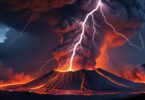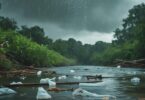Imagine walking through a dense forest filled with the sounds of birds, the rustle of leaves, and the scent of earth. That’s what native forests offer—a living, breathing ecosystem that’s full of life. But there’s more to these forests than their beauty. Native woods are the backbone of biodiversity. They keep ecosystems balanced and thriving. Without them, many species—including us—would struggle to survive.
Let’s dive into why native forests are so important for biodiversity and why protecting them is critical for the future of our planet.
What Exactly Are Native Forests?
Native forests are made up of trees and plants that have grown naturally in an area for centuries. They haven’t been introduced or planted by humans. Because they’ve existed for so long, these forests have created the perfect environment for local wildlife. Native forests are like homes that have been custom-built for the plants and animals that live there.
For example, in North America, oak and maple trees have supported a wide variety of life for thousands of years. Birds, insects, mammals, and even fungi have evolved alongside these trees. The same goes for the Amazon rainforest, which has developed into one of the most biodiverse regions in the world.
How Do Native Forests Support Biodiversity?
Homes for Wildlife: Native forests provide food, shelter, and breeding grounds for many species. Think of the intricate nests that birds build in tree branches, or the dens that mammals dig under tree roots. The trees are like apartment complexes for countless creatures.
Balanced Ecosystems: Everything in a native forest is connected. For example, insects pollinate plants, birds eat the insects, and larger predators eat the birds. This balance keeps the ecosystem functioning smoothly. When one piece of the puzzle is removed—like when trees are cut down—everything else falls apart.
Unique Species: Many plants and animals found in native forests can’t live anywhere else. The Philippines’ dipterocarp forests, for example, are home to species like the Philippine eagle and tarsiers, which are rare and endangered. If we lose these forests, we risk losing these unique creatures forever.
Why Should We Care About Biodiversity?
Biodiversity isn’t just about saving animals—it’s about saving ourselves. The more diverse an ecosystem is, the healthier it is. Healthy ecosystems provide clean air, fresh water, and fertile soil. They also help regulate the climate by absorbing carbon dioxide, which fights against global warming.
When native forests are destroyed, biodiversity suffers. This leads to soil erosion, loss of pollinators, and more extreme weather conditions. In short, losing native forests makes life harder for everyone.
Real-Life Examples: The Impact of Native Forests
The Amazon Rainforest: Often called the “lungs of the Earth,” the Amazon is one of the most important native forests. It’s home to more than 10% of all known species. Without it, many species would go extinct, and the world would lose a huge carbon sink, which helps reduce global warming.
The Mangroves of Southeast Asia: Mangrove forests along tropical coastlines protect against tsunamis and storms. They also serve as nurseries for fish and shrimp, which are essential for local economies. When these forests are cleared for development, local communities face increased flooding and loss of income.
The Boreal Forest: Stretching across Canada and Russia, the boreal forest is one of the largest native forests on Earth. It’s a major carbon store, and its trees and wetlands provide crucial habitats for wildlife like caribou, wolves, and migratory birds. The loss of these forests due to logging and oil exploration threatens global climate stability.
What Happens When Native Forests Disappear?
The loss of native forests leads to a cascade of negative effects. Here’s what happens:
Extinction of Species: Without their natural habitats, many species can’t survive. Forests like the Amazon are so rich in life that even small losses can result in extinctions.
Increased Carbon Emissions: Trees act as carbon sinks, meaning they store carbon dioxide from the atmosphere. When forests are destroyed, that carbon is released, contributing to climate change.
Loss of Ecosystem Services: Native forests provide services like pollination, water purification, and flood control. When forests are lost, we lose these benefits, which can lead to more natural disasters and food shortages.
How Can We Protect Native Forests?
The good news is that there are ways to protect and restore native forests:
- Support Sustainable Products: Look for products like paper and wood that are certified by organizations like the Forest Stewardship Council (FSC). This ensures they come from responsibly managed forests.
- Reforest with Native Species: Planting native trees in areas that have been deforested can help restore ecosystems. Many countries are now prioritizing native species in their reforestation efforts to ensure that local biodiversity can thrive again.
- Conservation Programs: Support organizations that work to protect native forests. They help create protected areas where forests can regenerate naturally and wildlife can flourish.
- Reduce Your Carbon Footprint: Since climate change is a major threat to native forests, reducing your carbon footprint by driving less, using renewable energy, and cutting down on waste can help.
Conclusion: Why Native Forests Hold the Key to Our Future
Native forests are not just beautiful landscapes—they are essential to life on Earth. By supporting biodiversity, regulating the climate, and providing resources we rely on, native forests help keep the planet healthy. Protecting these forests isn’t just about saving trees—it’s about ensuring a future where life can thrive.
If we work together to protect native forests, we’re protecting our planet and all the species that call it home—including ourselves.







